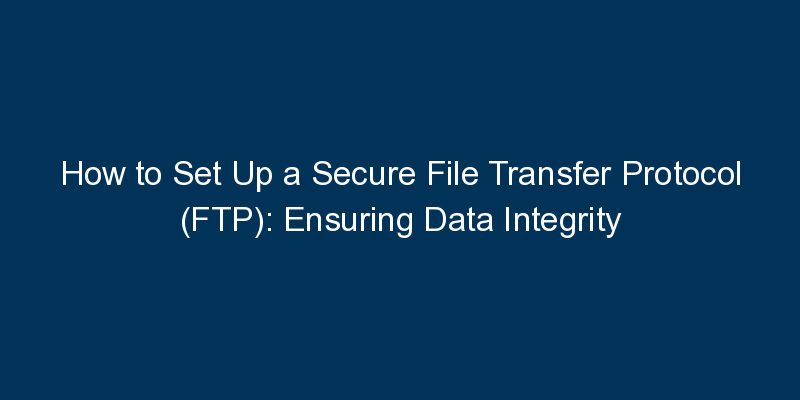Setting up a Secure File Transfer Protocol (FTP) is essential for organizations to exchange files securely while ensuring data integrity. This blog provides a comprehensive guide on how to set up a secure FTP, enabling businesses to protect sensitive information during file transfers.
Introduction:
File transfers are a common aspect of business operations, and securing these transfers is paramount to protect sensitive data from unauthorized access. Setting up a secure FTP ensures that files are exchanged safely, maintaining data integrity and confidentiality. This guide explores the key steps in establishing a secure FTP.
Key Steps to Set Up a Secure File Transfer Protocol (FTP):
- Choose Secure FTP Protocols: Select secure FTP protocols such as FTPS (FTP Secure) or SFTP (SSH File Transfer Protocol). These protocols encrypt data during transit, providing a secure channel for file transfers.
- SSL/TLS Certificate Installation: Obtain and install SSL/TLS certificates for FTPS. This ensures that data is encrypted and secure between the client and server. Regularly update and renew certificates for ongoing security.
- SSH Key Pair Generation for SFTP: If using SFTP, generate SSH key pairs for secure authentication. This adds an extra layer of security by utilizing cryptographic keys for user authentication instead of passwords.
- Firewall Configuration: Configure firewalls to allow secure FTP traffic. Define rules to permit FTP traffic only over the specified ports for FTPS or SFTP, preventing unauthorized access.
- User Authentication and Authorization: Implement strong user authentication and authorization mechanisms. Enforce complex passwords, two-factor authentication, and role-based access controls to manage user permissions effectively.
- Regular Security Audits: Conduct regular security audits of the secure FTP server. This includes reviewing logs, monitoring for suspicious activities, and ensuring that security configurations are up to date.
Conclusion:
Setting up a secure FTP is a fundamental step in securing file transfers and protecting sensitive data. By following the steps outlined in this guide, organizations can establish a secure file transfer environment, ensuring the integrity and confidentiality of data during transit.






















Comments